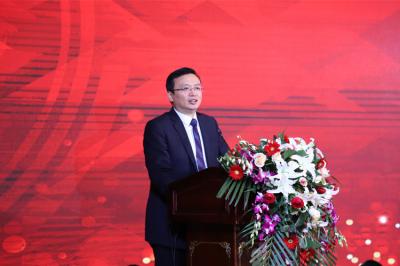Ceramic membrane, a new type of material membrane, will cause pollution and blockage during use, which will gradually decrease the membrane permeation flux. Especially for ceramic membranes used in sewage treatment processes, fouling occurs at any time.
Ceramic membrane fouling means that certain components in the treated liquid are adsorbed, deposited on the membrane surface, or enter the membrane pores, even causing the block, which greatly increases the permeability resistance of the membrane. The adsorption is the result between the ceramic membrane and the components in the material liquid, while the deposition comes from the interaction of the components adsorbed on the ceramic membrane surface and other components in the material liquid. The effect includes physical and chemical effects, and may also be related to biological effects. The extent of the effect is related to the concentration of the component, the charge, and the pH value of the liquid. After the operation starts, the concentration difference polarization phenomenon occurs, especially in the case of low flow rate and high solute concentration. When the membrane surface reaches or exceeds the saturated solubility of the solute, a gel layer is formed, which causes the membrane flux to be independent of the applied pressure, causing a sharp drop in membrane flux. The membrane operating in this state must be cleaned after use to restore its performance.
Three methods of prevention and treatment for ceramic membrane fouling
1)The pretreatment of the material liquid and the improvement of the characteristics of the material liquid have a great effect on the prevention and control of ceramic membrane pollution. Impurities such as inorganic matter, organic matter, microorganisms, and colloids contained in the material liquid harm the ceramic membrane. Therefore, the material liquid should be pretreated, and corresponding pretreatment processes should be added in the process to remove advantageous pollutants and reduce the pollution of the ceramic membrane to a minimum.
2) Improve the properties of the ceramic membrane thus increasing its hydrophilicity. Studies have shown that the hydrophilicity of ceramic membrane materials has a great influence on the anti-fouling performance of ceramic membranes. Hydrophilic membranes are less affected by adsorption and can produce greater membrane permeation flux.
3) Optimize the operating conditions of ceramic membrane filtration. Operating conditions are closely related to ceramic membrane fouling. Ceramic membrane permeation flux, operating pressure, cross-flow velocity, hydraulic residence time, solid residence time, operating temperature, and other operating conditions have a direct impact on ceramic membrane fouling.
The permeation flux of the contaminated ceramic membrane decreases. However, the flux and separation performance of the ceramic membrane can be restored by cleaning. In recent years, various cleaning methods have been proposed to remove the pollution of ceramic membranes, which mainly include physical cleaning, chemical cleaning, electrical cleaning, and ultrasonic cleaning.
3.1 Physical cleaning of ceramic membrane
Physical cleaning refers to the use of manual or mechanical methods to remove pollutants from the surface of the ceramic membrane or the membrane pores, mainly by water or gas for flushing. Common physical cleaning methods usually include low pressure and high flow rate cleaning, back pressure cleaning, and a combination of the two. Low pressure and high flow rate cleaning is to increase the membrane surface flow rate as much as possible under lower operating pressure. This method reduces the probability of solute molecules staying on the membrane surface. Back pressure cleaning is to apply pressure on the permeate side of the ceramic membrane to reverse the permeate through the ceramic membrane. On the one hand, this method can flush out the pollutants plugged in the ceramic membrane holes on the wall, and on the other hand, it also has a certain washing effect on the adhesion layer on the surface of the ceramic membrane on the material liquid side.
3.2 Chemical cleaning of ceramic membrane
In actual operation, for ceramic membranes with serious pollution, it is difficult to completely recover the membrane flux only by physical cleaning, and chemical cleaning must be used. There are many practical experience and skills in chemical cleaning methods, which usually vary due to the different properties of the adhesion layer formed on the surface of the ceramic membrane. The choice of chemical cleaning agent should be based on the type and degree of pollution of the ceramic membrane, as well as the physical and chemical characteristics of the ceramic membrane. The cleaning agent can be used alone or in combination. The inorganic acid in the cleaning agent is mainly used to remove the inorganic dirt and convert some insoluble substances in the pollutants into soluble substances; Alkali is mainly used to remove oil, protein, algae and other biological pollution, body pollution, and most organic pollutants; The integrator is mainly to complex with the inorganic ions in the pollutants to form a highly soluble substance, thereby reducing the salt deposited on the membrane surface and in the pores and the adsorbed inorganic pollutants. Several cleaning agents can also be appropriately compounded as special cleaning agents, or alternative cleaning methods of acid and alkali can be used to clean different liquids. For different types of ceramic membrane pollution, the pollutants should be analyzed and the appropriate agencies should be used for cleaning. Generally, ceramic membrane pollution is caused by multiple types of pollution. A single cleaning method is not effective. In actual work, multiple chemical solutions can be used to clean them in sequence. Besides, during the cleaning process, attention should be paid to the control of cleaning conditions such as the temperature, pH value, and cleaning flow rate of the cleaning fluid.
3.3 Ultrasonic cleaning of ceramic membrane
Ultrasonic cleaning refers to the application of an electric field on the ceramic membrane to move the charged particles or molecules along the direction of the electric field. The particles or molecules on the interface can be removed by applying the electric field within a certain time interval without interruption. Namely, it relies on the electric field to reduce the concentration difference polarization and increase the flux of the ceramic membrane. The disadvantage of this method is that it needs to use a conductive membrane and a special membrane device equipped with electrodes.
whichever used to clean the ceramic membrane will cause damage to the ceramic membrane. Therefore, the cleaning quality should be improved as much as possible and cleaning times should be reduced; at the same time, the ceramic membrane should be cleaned in time to reduce the difficulty of cleaning.
The anti-fouling properties of ceramic membranes need to be further improved. The ceramic membrane must be loaded on porous support with considerable strength to withstand the pressure exerted on the membrane. Therefore, improving the anti-fouling and cleaning ability of the membrane and the support, as well as the performance of the support itself is very important to the ceramic membrane separation technology. At the same time, due to characteristics of high mechanical strength and high-temperature resistance of ceramic membranes, in the mid of cleaning, its cleaning effect can be improved via increasing the strength of backwashing, or via high temperature burning to remove organic matter.




 +86-25-58849045
+86-25-58849045
 +86-25-58749295
+86-25-58749295
 jiuwu@jiuwu.com
jiuwu@jiuwu.com
 No. 9 Park Road, Pukou District, Nanjing City (Sanqiao Factory)
No. 9 Park Road, Pukou District, Nanjing City (Sanqiao Factory) Call us on:
Call us on:  Email Us:
Email Us:  No. 9 Park Road, Pukou District, Nanjing City (Sanqiao Factory)
No. 9 Park Road, Pukou District, Nanjing City (Sanqiao Factory)

 English
English 한국어
한국어 français
français русский
русский Español
Español
